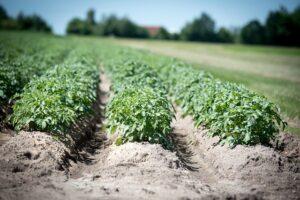The resistance mechanisms of potato against bacterial wilt have been revealed
Mechanisms of resistance against potato wilt caused by Ralstonia solanacearum were discovered under the guidance of researchers from the Agricultural Institute of the ELKH Agricultural Research Center (ATK MGI).

(Photo: Pixabay)
The research established that in potato varieties resistant to the bacterium, in addition to changes in the level of some stress hormones, more intense cell wall thickening, production of antimicrobial substances and a reduction in the activity of some susceptibility genes led to the development of resistance. The publication presenting the results was published in the international scientific journal Frontiers in Plant Science – the Eötvös Loránd Kutatási Hálózat (ELKH) informed MTI on Friday.
As the announcement reminds, the potato is an important cultivated plant in Hungary
At the same time, potatoes are significantly threatened by Ralstonia solanacearum, a bacterium of tropical origin that has appeared in the country in recent decades, which rots the tuber and withers the plant. In addition, there is no known effective chemical defense against this quarantine pathogen – the researchers warn. The existing resistance mechanisms of potatoes against Ralstonia were revealed by examining the expression of all potato genes (transcriptome sequencing), analyzing the produced secondary metabolic products (UHPLC-MS/MS metabolome analysis) and using modern microscopic techniques (confocal microscope). By testing several varieties from all over the world, including the sensitive Désirée, two resistant genotypes, Cruza and Calalo Gaspar, were identified and analyzed for their resistance to the bacterium. As a result of the experiments, it was determined that the level of the stress hormones abscisic acid, jasmonic acid and salicylic acid also increased in the sensitive variety as a result of the infection, but these hormonal pathways alone could not protect the plant from bacterial wilt.
The resistant varieties were distinguished by greater lignification (thickening of the cell wall) of the root part (xylem), even without infection
In response to infection, the Cruza variety defended itself with even more intense cell wall thickening, while the Calalo Gaspar defended itself more by producing antimicrobial substances, the research revealed. At the same time, as a result of the infection, the activity of several so-called sensitivity genes (for example WRKY22, 24) mentioned in the literature decreased in both resistant varieties. As the announcement reminds, sensitivity genes are the plant’s own genes – for example, negative immunoregulators, interaction partners of pathogenic virulence factors – and the proteins produced by them can be used by the bacterium for its own purposes during infection. In the future, in valuable varieties, it will be worthwhile to spoil these genes by mutation, thus improving their resistance to bacterial wilt – summarizes the ELKH announcement. MTI
Related news
Related news
The calm before the storm?
The first returnable plastic, aluminium and glass drink containers have…
Read more >(HU) Az ember birka, amerről a kolomp szól, arra megy – Puskás Tamás színész, rendező a FutureTalks podcastban
Sorry, this entry is only available in HU.
Read more >National economy considerations
At a conference organised by the National Association of Plant…
Read more >




